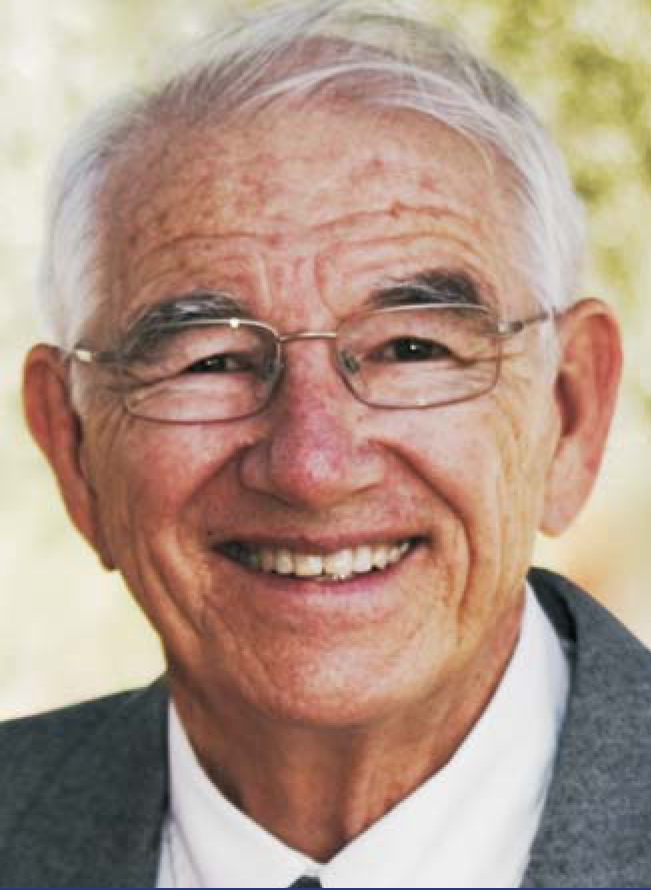Frank James Low
DOI: 10.1063/1.3366247
On 11 June 2009 Frank James Low, one of the founders of infrared astronomy, died in Tucson, Arizona, following a long illness. “His influence on astronomy was so large that simply mentioning ‘Frank’ with no surname was sufficient for many years to identify him unambiguously,” said the University of Arizona’s announcement of his passing.
Born in Mobile, Alabama, on 23 November 1933, Low earned a BS in physics from Yale University in 1955 and, in 1959, a PhD in solid-state physics from Rice Institute (now Rice University) under Harold Rorschach; Low’s thesis was titled “Adiabatic Fast Passage Measurements of the Nuclear Magnetism in Liquid Helium-3.” He approached science with great energy and deep technical insight, which helped him to solve formidable problems almost intuitively, and his enthusiasm swept away any objections from his colleagues.
After earning his PhD, Low went to work at Texas Instruments. There his most important invention was a low-temperature thermometer that he recognized as having great promise as an IR detector. In 1962 he took a position with the National Radio Astronomy Observatory, where he could experiment with his bolometer in millimeter-wave astronomy. There he helped plan and start the construction of the 12-meter millimeter-wave telescope that is still in operation on Kitt Peak. In 1961 he had met Harold Johnson, who was pioneering near-IR astronomy at McDonald Observatory. By 1963 they had begun exploring the entire ground-accessible IR, from 1 to 25 µm.
Low moved back to Rice, but in 1965 he followed Johnson to the Lunar and Planetary Laboratory at the University of Arizona. It was there that Low made many of his groundbreaking discoveries. He found that Saturn and Jupiter radiate considerably more energy than they absorb from the Sun. In 1967 he and graduate student Doug Kleinmann found the prototype of regions of young star formation, now known as the Kleinmann—Low nebula. They also discovered the substantial mid-IR outputs of star-forming galaxies and active nuclei.
To get above the absorption by the atmosphere, in 1966 and 1967 Low and Carl Gillespie used a Douglas A-3B bomber to measure the output of the Sun at 1 mm. In 1969 Low began a larger program in airborne astronomy by installing a 12-inch telescope into a Learjet. With that instrument, Low and graduate student George Aumann confirmed the internal energy of Saturn and Jupiter and observed the extraordinary far-IR outputs of star-forming regions and external galaxies. The weight requirements for flying in the Learjet also led to innovative diets; one was based exclusively on shrimp, and another involved sitting in an ice-cold swimming pool in lieu of exercising.
In 1967 Low founded Infrared Laboratories, which supplied state-of-the-art instruments to astronomers around the world. In many cases he provided instruments at no cost but simply requested to be named as a coinvestigator. At the same time, he was intensely competitive and often would set out on his own to compete with teams he had given instruments to. As a result, he was at the center of the rapid advances that established ground-based and airborne IR astronomy as important initiatives. His competitive nature spilled over into other areas; for example, it led him to purchase seven personal computers in a single year, each with a marginal performance advantage over its predecessor.
Both ground-based and airborne telescopes produce intense IR emission that interferes with their operation. Low worked with Fred Gillett, James Houck, and Gerry Neugebauer in leading the development of the payload for the Infrared Astronomical Satellite , the first IR astronomical observatory in space. IRAS, which was launched in 1983, was built by a collaboration among the US, the UK, and the Netherlands. It achieved unparalleled sensitivity by operating at very low temperature above all the atmospheric emission and absorption, and it provided a source catalog that remains a fundamental reference.
While involved with IRAS, Low was tapped to be on the team of the Space Infrared Telescope Facility, which would study in detail individual sources found by IRAS. SIRTF was delayed for many years because of a lack of funding. In 1993 the desperate science team held a retreat at Ball Aerospace in Broomfield, Colorado. In the middle of the night, Low conceived of a new technical approach that combined radiating most of the telescope’s heat into space with a simple liquid-helium dewar to remove the residual heat and bring the telescope down to 6 K, where it would not contribute any unwanted signal to the far-IR detectors. Over the following year, Low worked closely with engineers at the Jet Propulsion Laboratory to show how the approach could be implemented. The new cooling approach did not compromise any of the mission’s objectives, but it lowered costs, which led Congress in 1998 to approve construction of SIRTF, now called the Spitzer Space Telescope. Radiative cooling has been adopted generally in plans for larger IR space telescopes, including the 6.5-meter-aperture James Webb Space Telescope , scheduled to be launched in 2014.
Frank Low led the tiny band of explorers who started modern IR astronomy. That area has grown phenomenally in four decades and is now practiced from the ground, the air, and space—all of which he pioneered. With his death, the astronomy community has lost a true innovator who profoundly changed the way we look at the universe.

Frank James Low

More about the Authors
George Rieke. Steward Observatory Tucson, Arizona, US .




